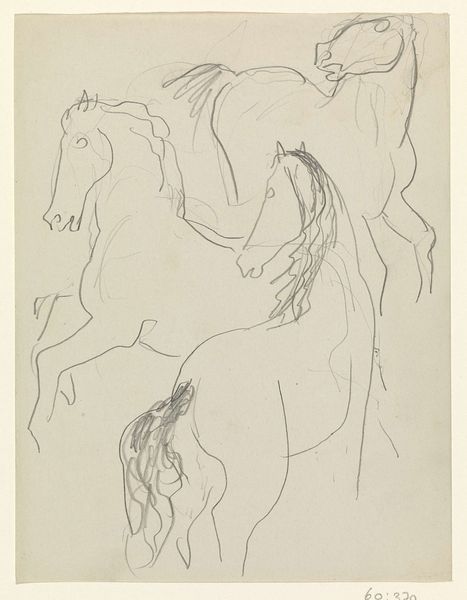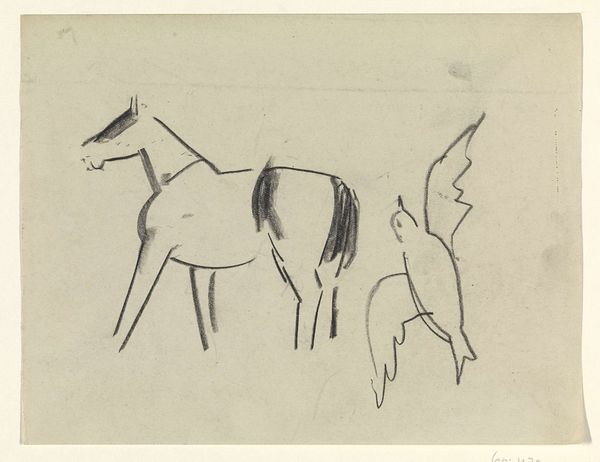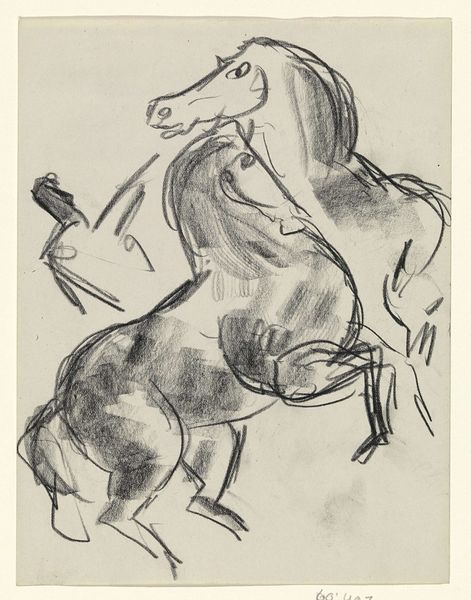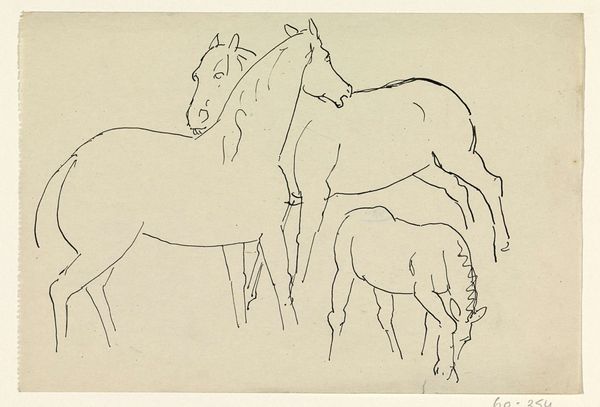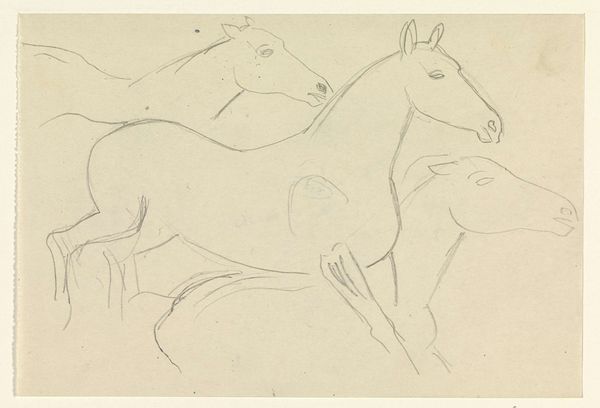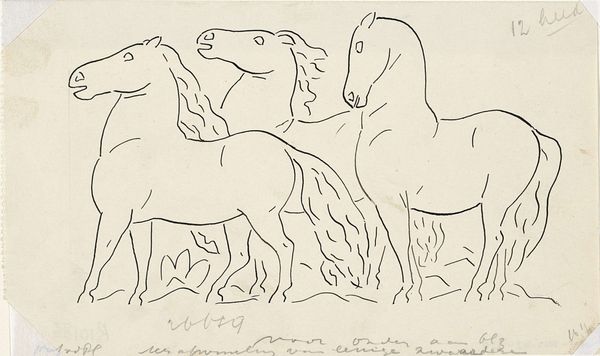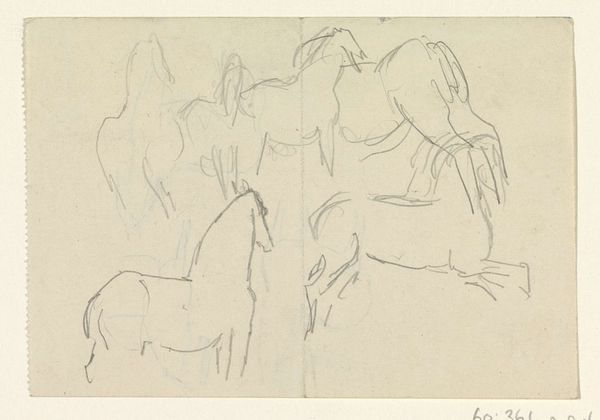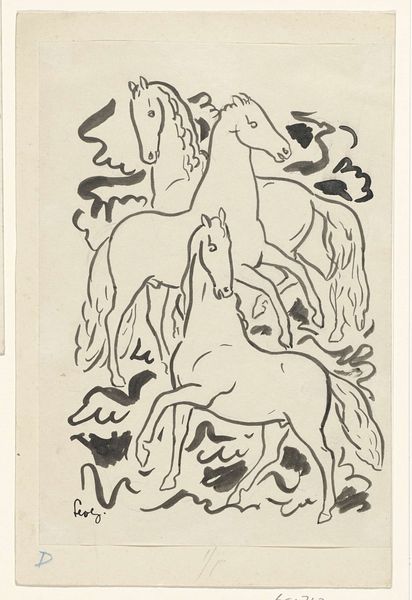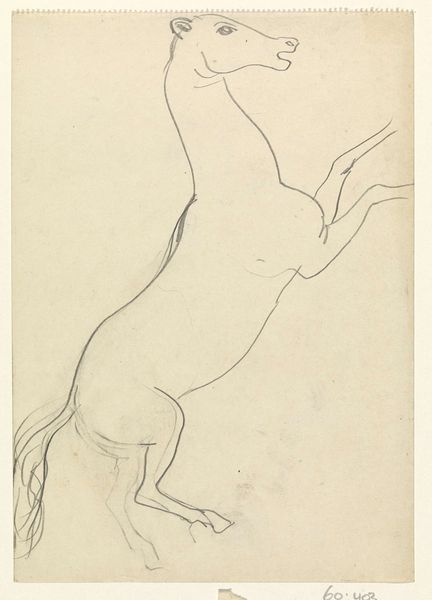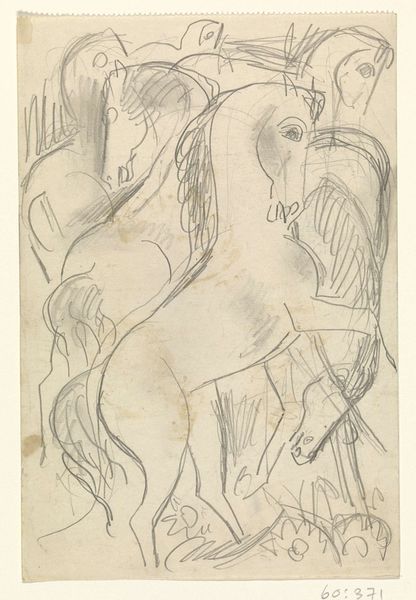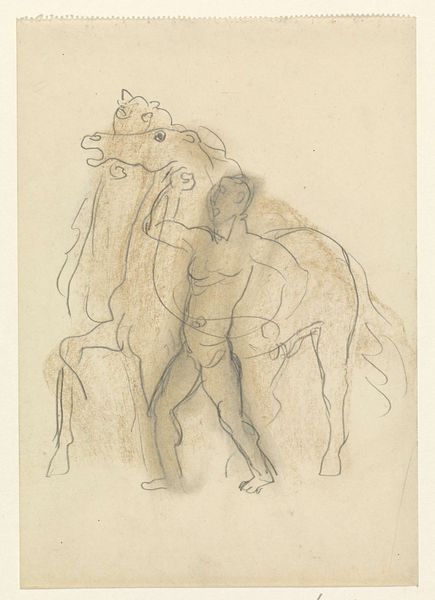
drawing, ink, pen
#
drawing
#
pen sketch
#
landscape
#
figuration
#
ink
#
geometric
#
pen-ink sketch
#
horse
#
abstraction
#
sketchbook drawing
#
pen
Dimensions: height 211 mm, width 169 mm
Copyright: Rijks Museum: Open Domain
Editor: This is "Drie paarden," or "Three Horses," a pen and ink drawing by Leo Gestel, likely made sometime between 1891 and 1941. It has a very unfinished, sketch-like quality. What do you see in this piece? Curator: The unfinished quality is precisely where its power lies. Gestel's lines capture the *idea* of horses, their strength and potential energy. But, beyond just representation, how do these horses speak to broader societal anxieties of the period? Consider the historical context: this work bridges two World Wars. Editor: Anxieties? I hadn’t considered that. They seem almost playful, or maybe that’s just because the lines are so simple. Curator: Perhaps. But think about the role of the horse throughout history: labour, war, transport. Gestel strips away the romanticism often associated with these animals, leaving us with an almost skeletal representation. The abstraction itself can be read as a commentary on the dehumanization of conflict. Does the lack of detail diminish their individuality, reducing them to symbols of labor or conflict? Editor: That’s a compelling point. It makes me think about the industrialization happening during that period too, maybe they are even a symbol for that. They seem less about celebrating the animal and more about representing the changing world. Curator: Exactly. The skeletal rendering can speak to themes of exploitation and depletion inherent in systems of power. These horses are not idealized, they're suggestive of the burden they carry, literal and figurative. Do you think Gestel, through this simplicity, is leveling criticism? Editor: I think so. I originally saw it as a quick sketch, but understanding the historical backdrop gives it so much more weight. It shows how even simple forms can carry complex and challenging messages. Curator: Precisely! By situating Gestel’s drawing within its historical and socio-political framework, it allows us to actively question not only the piece itself, but also our understanding of societal changes.
Comments
No comments
Be the first to comment and join the conversation on the ultimate creative platform.
